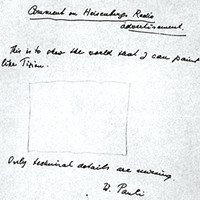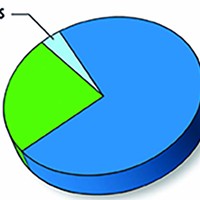[
{
"name": "Top Stories Video Pair",
"insertPoint": "7",
"component": "17087298",
"parentWrapperClass": "fdn-ads-inline-content-block",
"requiredCountToDisplay": "1"
}
]
Beauty is truth, truth beauty,' — that is all/Ye know on earth, and all ye need to know."
— John Keats, from "Ode on a Grecian Urn"
What works for old pots doesn't necessarily work for physics. In fact, the search for "beauty" has stymied progress in physics for the past 40 years, according to German theoretical physicist Sabine Hossenfelder. (She also says, "Writing is what keeps me sane. I'm not sure whether that's a career advantage in high-energy physics today.") The subtitle of her new book Lost in Math sums it up: How Beauty Leads Physics Astray.
Physics is the science that seeks answers to some of the biggest questions, including:
How can the two wildly successful but incompatible basic theories of physics — general relativity and quantum mechanics — be reconciled?
What is dark matter, the stuff thought to comprise 85 percent of the matter in the universe?
Why does time (unlike space dimensions) go in one direction?
How can we explain "fine tuning," whereby if the values of fundamental constants were just slightly different, we wouldn't be here?
Are there extra spatial dimensions beyond the three we observe?
Despite incredibly sophisticated and expensive experimental apparatus (CERN's $6 billion Large Hadron Collider, which straddles the Swiss-French border, is only the most visible), progress on these questions has been essentially at a standstill for four decades. A cynical view of the LHC, for instance, is that it's been a bust. Yes, it found the Higgs boson (to great fanfare) in 2012 but that had been predicted 48 years earlier, so no surprise there. And supersymmetry (SUSY), the theory that most physicists have pinned their hopes on as key to answering the above questions, is in trouble. Neither the LHC nor other big-science experiments have found any evidence for it.
Scientific knowledge advances empirically: Someone proposes a theory that can be confirmed or refuted by experiment, leading to better theories, leading to more experiments, in an ongoing cycle. But how do researchers know which of several competing theories to investigate and test? Especially when experiments are costly — see above — and time-consuming? One well-established criterion for picking a worthy theory is the notion of beauty. A "beautiful" theory is more likely to attract attention and funding than an "ugly" one. And that, according to Hossenfelder, is the problem: Researchers have been seduced by notions of "beauty" at the expense of exploring less elegant (or uglier) theories.
Beauty, in this scientific sense, stands for a triad of aspects: simplicity, elegance and naturalness.
Simplicity: When Newton explained that an apple falls for the same reason that the moon orbits the Earth (universal gravity), he simplified our understanding of the natural world. Today, we look to subsume general relativity and quantum mechanics into one Theory of Everything.
Elegance: An elegant scientific theory is both simple and leads to unexpected results. The go-to example is the General Theory of Relativity. Using the tools of differential geometry (not available to Einstein), it's fairly simple — so I'm told — to derive the theory in a few lines of equations. Yet out of this simplicity tumble such unexpected phenomena as gravity waves, black holes and a dynamic, expanding universe.
Naturalness: This needs a column of its own but, in a nutshell, a natural theory has the ratio of "dimensionless constants" close to 1 and avoids the "fine-tuning" problem mentioned above.
So beauty sounds good — intuitive even. But maybe that's just because of our anthropocentric view of the world. Or perhaps we live in an ugly universe. To give Hossenfelder the last word, "Why should the laws of nature care about what I find beautiful?"
Barry Evans ([email protected]) discussed the dead-end posed by the Higgs boson discovery in "God Particle or Goddamn Particle?" (Nov. 7, 2013)
Speaking of...
-

Rocket Science
Oct 26, 2023 -

Don't Shoot the Physicist!
Oct 21, 2021 -

Dark Energy: Blunder or Boondoggle?
Jan 23, 2020 - More »
Comments (3)
Showing 1-3 of 3
more from the author
-
A Brief History of Dildos
- Apr 11, 2024
-
Eclipse!
- Mar 28, 2024
-
The Little Drone that Could
- Mar 14, 2024
- More »
Latest in Field Notes
Readers also liked…
-
Trouble on the Line: The Reality Part 2
- Nov 3, 2022

































